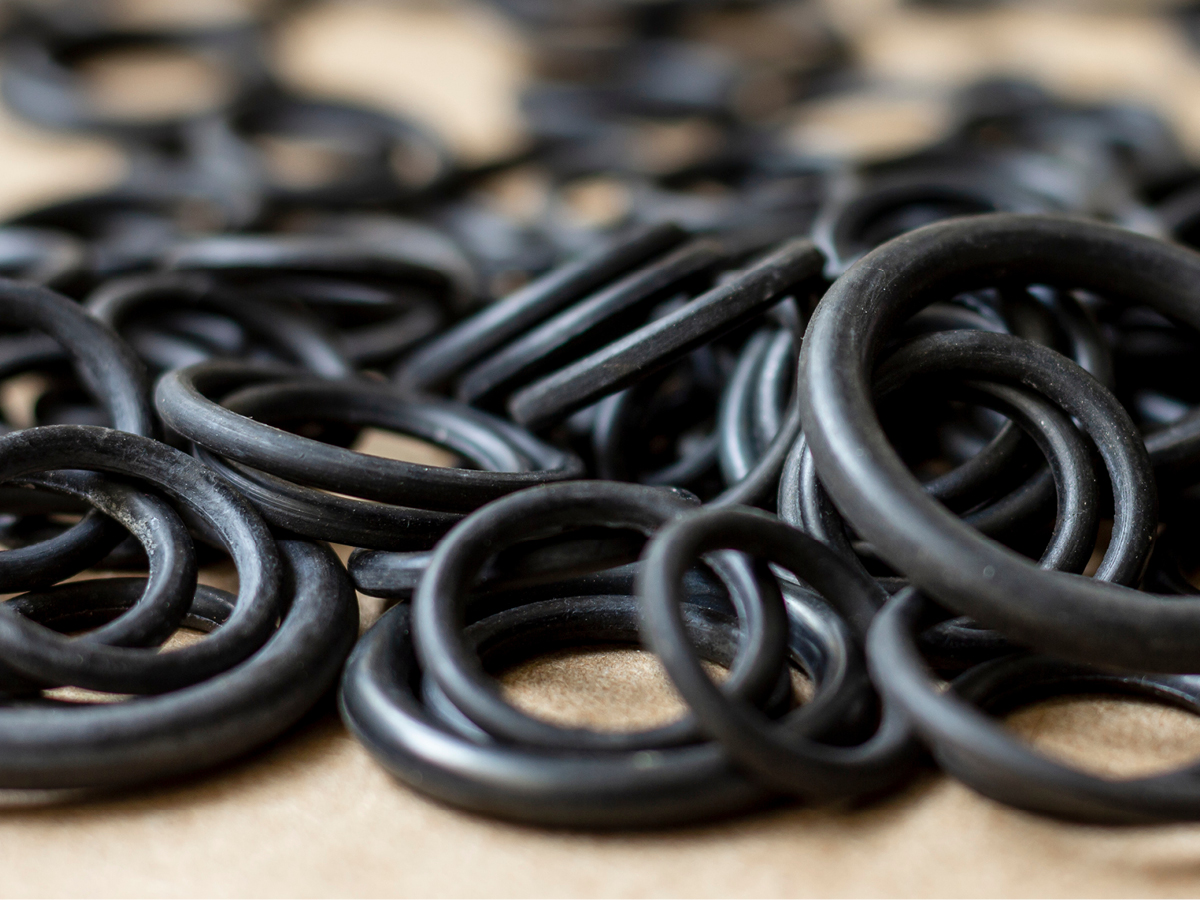The Shore durometer scale measures material hardness. In other words, it measures how resistant a material is to indentation. It’s one of the most important specs to understand when choosing rubber components like o-rings or gaskets. The scale helps engineers compare soft and hard materials across a variety of applications.
Shore hardness is measured by pressing a specific gauge into the surface of a material. Different Shore scales use different needle types and pressure levels to test a range of materials, from soft foams to hard plastics.
Why is the Right Hardness Important for O-Rings?
O-rings create a seal by compressing into a groove. If the rubber is too soft, it might deform under pressure or wear out too quickly. If it’s too hard, it might not compress enough to form a seal. Matching the Shore hardness to the application’s pressure, temperature, and motion ensures reliable performance.
Examples:
- A 70A durometer o-ring is commonly used in hydraulic systems because it balances flexibility and strength.
- A softer 40A o-ring might be needed in a vacuum application where surface conformity is critical.
- A harder 90A compound could be used in high-pressure dynamic seals that need resistance to extrusion.
Hardness directly affects sealing behavior, service life, and how the o-ring handles temperature swings or chemical exposure.
Shore A vs. Shore D Durometer Scales
Shore A and Shore D are the two most referenced scales when it comes to rubber and plastics. Each scale uses a different gauge with a distinct spring force and indenter shape. That means they aren’t directly interchangeable; rather, they overlap at specific points.
- Shore A measures soft, flexible materials like rubber, silicone, and soft TPE. This is the standard scale for o-rings and gaskets.
- Shore D measures harder materials like rigid plastics, polyurethane, and filled elastomers. It is rarely used for sealing products.
Shore D is not appropriate for most elastomeric seals. O-rings must deflect to fill their gland. If the material is too hard, it won’t compress and seal properly. That’s why nearly all o-rings are specified by Shore A hardness.
What is the Difference Between A and D Durometer?
- Shore A is used for soft, compressible materials. It covers the typical hardness range of o-rings from 30A (very soft) to 90A (very firm).
- Shore D is for rigid materials. Its scale starts where Shore A ends. A Shore D 50 reading is roughly equivalent to Shore A 100.
For o-ring customers, Shore A is almost always the correct measurement. Shore D is only relevant for plastic backup rings, rigid inserts, or extremely high-load components.
Other hardness tests exist, like Rockwell, Brinell, or IRHD. These are used for metals, dense plastics, or industrial hardness standards. They are not typically for rubber. IRHD is sometimes used in Europe for elastomers but is less common than Shore A in North America.
How to Read Durometer Measurements
The durometer value includes two parts:
- A number, which indicates the hardness (higher = harder), and
- A letter, which indicates the scale (e.g., “A” for Shore A).
Examples:
- 70A is a medium-firm rubber. It’s one of the most common hardness ratings for general-purpose o-rings.
- 90A is much harder. It is used in high-pressure applications or where extrusion resistance is vital.
- 50A is softer and better for low-pressure, static, or fragile-component sealing.
The Shore A and D scales overlap slightly:
- A Shore A reading of 100 is roughly equivalent to Shore D 50.
- A Shore D 80 is roughly equivalent to Shore A 120 (outside standard A scale).
Understanding this overlap helps when comparing materials or cross-referencing specifications from different manufacturers.
Explore the Marco Range
Marco Rubber & Plastics offers o-rings and custom seals in a wide scope of durometer ratings. Our selection ranges from soft 20A silicone to high-durometer fluorocarbon compounds. We help customers in aerospace, industrial manufacturing, chemical processing, water systems, and more find materials with the right balance of hardness and chemical compatibility.
